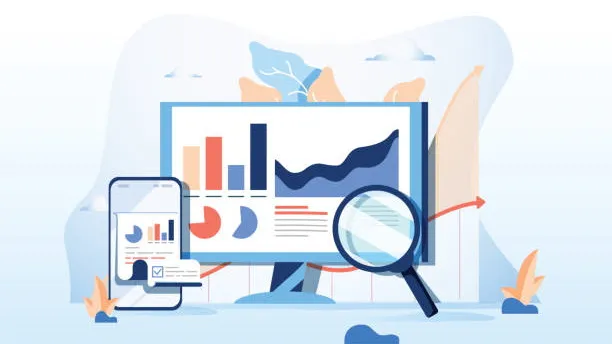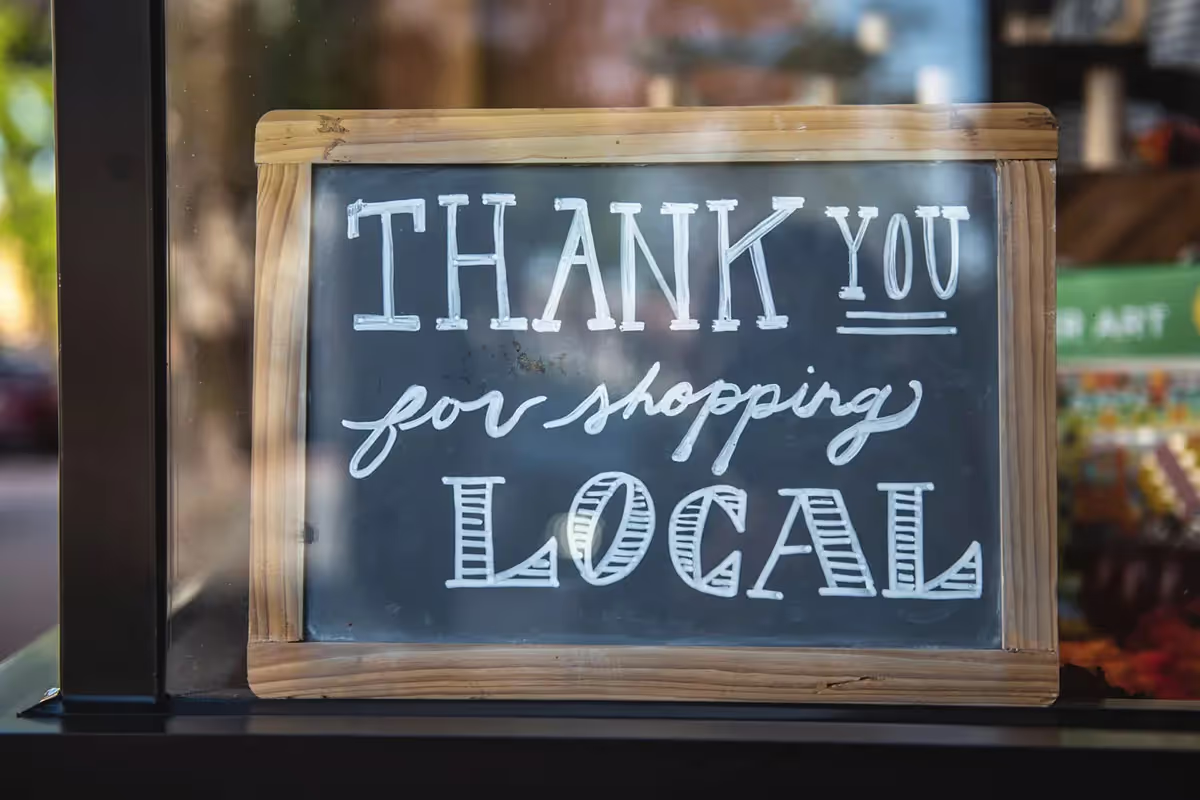It can be hard to find time for marketing your business, especially when you are already busy with other tasks. The good news is that there are many ways to promote your website and increase traffic without spending a lot of time or money. In this blog post, we will discuss how you can market your website locally and online. We'll also talk about how to use online promotion tools like search engine optimization, social media advertising, and pay-per-click (PPC) ads.
Why is Having a Good Website Important for My Business?

Before diving into the different ways you can market your website, it's important to review why marketing your website is important for your business's success. There are 6 ways you can promote your business: (1) advertising, (2) personal selling, (3) sales promotion, (4) public relations, (5) direct marketing, and (6) events/experiences. However, not all promotional tactics are created equal, as some require significantly more time than others. The reason building a good website for your business is so important is because it is easily scalable, takes little effort to set up and maintain, and improves the conversions when using the typical ways to promote your business:
1. Advertising
Advertising is the traditional way of getting paid content in front of consumers through paid media. This could include those banner or display ads with a blue "X" in the corner next to the websites you visit. While ads can be a great way to drive customers to your business, they can be time and resource consuming as managing your ad spend and tracking campaign data can be overwhelming during a busy season. It's also not the most scalable option - meaning something that cannot be automated - as advertising is best when deployed over longer periods of time, which is only feasible when you have the time and appropriate budget for it.
2. Personal selling
Personal selling is the process of 'knocking on doors' (or cold calling) to reach customers. For example, for a janitorial cleaning service, this would entail directly reaching out to local businesses to solicit cleaning services. Personal selling demands the most time and (oftentimes) energy because you are actively engaging with each prospective customer with no way of automating the process. While this is great for building rapport and establishing a reputation for yourself early on, it can also be difficult to maintain once you start getting business and are managing current business and operating expenses.
3. Sales promotion
Sales promotion is the marriage of advertising and personal selling by offering discounts, rebates, or other special benefits for temporary occasions, such as trade shows or holidays. This is great for service professionals because a lot of service-based work have seasonal peak and off-peak times of the year. For example, Fall Clean Up helps drive landscape revenues, and cleaning services often have peaks during November and December in preparation for the holidays. The key here is providing incentives for customers to pay for your business's services.
4. Public relations
Public relations is the long-term branding and communication you put out for your business. Examples of public relations are long-form content like blogs or podcasts or short-form content like social media. The perks of a robust public relations strategy is building a consistent brand for your business, even if it might be only viable for the long-term.
5. Direct marketing
Direct marketing is the category that includes email marketing and telemarketing. You reach out to customers based on data you have collected to market your business. While it is scalable and easy to replicate, to use email marketing and other tools can be really difficult to establish a relationship with your customers. However, there are applications for direct marketing. If you are a small business, it can be a good way to become known in your area, so long as your messaging is sincere.
7. Events/experiences
Events/experiences is exactly as it sounds: marketing your business in person at live events, whether it be trade shows, conferences, or other community events. This is a good way to get in touch with potential customers and actively build your reputation. However, similar to other in-person promotional channels, it can be time-intensive and unproductive on a bad day.
What is the Best Way to Market My Website?

While there is no one-size-fits-all solution to marketing your website, there are a few proven methods to increase web traffic.
Top 7 free ways to promote your website
1. Social media
Social media remains one of the best free ways to market your business's website. Popular platforms such as Instagram, Facebook, and Twitter offer ways to create a profile for your business and interact with customers and link back to your website. This helps your website rank higher on search engines by adding credibility. Promoting your business's website is important on social media also because your social media profiles are highly connected with how your business is perceived.
2. Online communities
Online communities include websites such as Facebook groups, chambers of commerce, and the like. There are a myriad of options, but which ones should you choose? Ideally, getting set up with a 2 or 3 high quality Facebook groups in your area and an industry association is the way to go. If you can also get in touch with your local chamber of commerce, that is another great place to market your website as potential customers in your neighborhood will have a way to get in touch with you.
3. Collaborating with business owners in your network
If you are in a service industry, it is important to collaborate with business owners in your network. By doing this, you give yourself exposure to their customers and they do the same for you. This can be particularly helpful if there are other businesses that complement yours or have clients who might want services from your company too.
4. In-person advertising
Another easy way to market your business or website is to add it onto your marketing materials such as your work vehicle, flyers, and yard signs. You can list your website URL or create a QR code is that links to your website. You can make one for your business's website by going to sites such as QR Code Generator or Go QR Me, entering your website URL, and downloading or copying the QR code directly from the site. There are also paid options on these sites that allow you to customize the design of your QR code to help stand out when promoting your website.
5. Google My Business (GMB)
Google My Business is the business side of Google Maps. It allows business owners to manage their business's listing on Google and add helpful information, such as your official website, for customers to find you online. While managing your listing on GMB is a great way to promote your website because it's owned by the same company that fuels online searches - Google - GMB provides owners with useful tools to help drive traffic to your site. Take full advantage of it to get more customers to you from the web.
6. Facebook
Similar to GMB, Facebook is a must-have because of how many of your customers use it - not just for social purposes, but to find the services they need. Setting up a business page for your business takes no more than 5-10 minutes, and there are helpful guides on Facebook and online to help get you started. While a Facebook page by itself is a great way to get new business, it isn't complete without your website. This way, you can connect with customers more directly and offer them a way to become more invested in your business beyond a simple Facebook page.
7. Apple Maps
Similar to GMB, Apple Maps is a popular tool your customers use to find businesses in their area, and commands 10-12 percent of the navigation app market. Needless to say, ensuring your business is listed on Apple Maps - and accurately - is important. There are many helpful articles online to help you get started, such as this article by Intuitive Digital. Again, while listing your business on a navigation app is important for visibility, it is even more important that you remember to include your website so that customers can connect with your business and directly purchase from you.
It is also worth mentioning that there are countless other creative ways to drive traffic to your website. This may include, starting a blog that features guest blogging, posting on LinkedIn and other social networks, starting an email marketing campaign, or creating an email newsletter catered to viewers of your website. However, they are notably less direct and may be more time-consuming. For other free methods of promoting your website for free, we recommend looking through ProPhone's comprehensive guide on what online profiles every home service business should have.
Top 3 paid ways to promote your business
1. Pay-per-click (PPC)
PPC is a method of marketing on search engines such as Google and Bing. You bid for keywords to place your website at the top of the list when potential customers look up information about your business on these sites, which helps drive traffic. This can be expensive though because it requires you to continuously pay every time someone clicks on your site from one of the online sources you decide to run campaigns for.
2. Paid social media campaigns
Social media platforms provide a great way to market your business's website because it allows you to target specific audiences and create interactive conversations with customers. However, as with PPC, social media can be expensive. You can use paid ads on popular platforms such as Facebook or Twitter if they are available - just remember that the efficacy of your paid social media efforts relies on the browsing habits of your customers. For example, it may be easier to advertise on Facebook than Twitter because local communities tend to prefer communicating through Facebook groups than through Twitter.
3. Influencers
Influencers are a great option for promoting your business's website because they offer an opportunity to get in touch with potential customers who will be more likely to choose you over a competitor. For example, if you own a taco shop and want to market on social media, collaborating with popular food bloggers or YouTubers may help drive sales. For service professionals who specialize in pressure washing, you may consider collaborating with a pressure washing influencer on TikTok, which is a trend that has dramatically grown in popularity this year alone.
How to See How Much Traffic Your Website Gets

There are a few different tools you can use to see how much traffic your website gets. Google Analytics is one of the most effective options as it gives you information such as where visitors come from and what pages they spend more or less time on. If you are willing to spend money to get more detailed information on what content works well with your potential customers and other ways to drive traffic to your website, many marketers use SEMRush or Google Keyword Planner to conduct keyword research. Keyword research is just a fancy way of finding the terms people use to find Google search results. This is useful because it allows you to make small adjustments to your website that dramatically help your business to stand out in search engine results pages, or SERPs - meaning that your business's website will appear close to the top of the page when your customers are searching for the services you offer.
Best tools to track web traffic performance
Google Analytics
Google Analytics is a free tool provided by the search engine giant that you can download to your browser. It gives real time feedback about how many people visit, where they come from, and what pages on your site are most popular or least popular. Google Analytics is also a great resource for analyzing traffic from other sources such as Facebook or Bing. However, if you are using Google Analytics to track organic and paid traffic to your website, be sure to pay close attention to your attribution model. An attribution model refers to how different sources are assigned credit for a conversion.
For example, let's say that you own a car wash business with a website that allows customers to book online, and a customer finds your business online by searching "car wash near me" in Google. They click on a paid ad in Google for your business, and decide to resort to Facebook to find local business owners of car washes. When they search, they also see your business in Facebook, click around a bit, and then copy and paste your website directly into their browser. A few days later, that same person books an appointment to get their car washed. Awesome! But, who gets the credit for their business? Facebook? Google Ads? Your website's SEO? This is where your attribution model comes in. There are many different models to choose from in Google Analytics, but we recommend choosing a multi-touch model - these are attribution models that take all of the points of the customer's journey into consideration. This is important because no one source is the reason for the conversion. By default, Google Analytics will select a single-touch model. It is very important to change this to a multi-touch model so that you can get a more realistic idea of which sources are driving the most revenue for your business.
Google Search Console
Another great tool to track website traffic is Google's own search console. The benefit of using the search console over other sources such as Google Analytics is that it gives you much more information about your site's performance, including how many impressions and clicks each result gets when searched for in a specific location, whether or not users are clicking
Alexa toolbar
Alexa's website offers an easy way for users to track traffic without paying a dime, which can be downloaded through their website. Best of all, there is no installation required. Alexa is also a great way to track traffic on mobile, which Google Analytics does not provide.
Alexa results are based on data they collect from their toolbar users who consent to share the information anonymously through the toolbars, and it can be helpful for businesses that don't see much traffic but would like to learn more about where some of its potential customers come from. Simply download the toolbar, which gives you information about how many people visit your site on a daily basis.
Compete vs. Quantcast
Compete and Quantcast are two other tools that provide website traffic information for free but may not be as accurate or reliable as Google Analytics or Alexa's Toolbar. Compete uses an email address to log in, while Quantcast requires a Facebook or Twitter account. However, both provide useful information about how many people visit your site on a daily basis.
SimilarWeb
SimilarWeb is another free website traffic tracker that allows you to get information such as daily visits and where your site ranks on a global scale for certain keywords. Website visitors love access to this kind of data because it helps them understand how many people visit the site regularly and see what kinds of sites they are coming from.
Traffic tracking tools help you understand how to market your website by making small adjustments to increase the amount of paying customers is drives to you.
Other Websites That Drive Traffic to Your Website

There are other websites out there, such as Alexa and Google Trends, that can be used to see how much traffic your website gets each month. These sites also provide up-to-date information about what keywords people use when searching for products similar to yours and where they come from.
Summary
- Evaluate your website to make sure it's a faithful representation of your business.
- Decide which marketing channel works best for your schedule and current resources. Can you dedicate a significant amount of time to marketing and direct sales, or are you looking for something more low-maintenance that you can check on every 2-3 weeks?
- Monitor your website tracking to measure your marketing efforts over time.





.avif)


